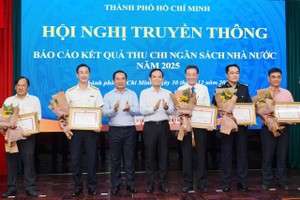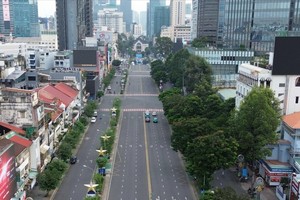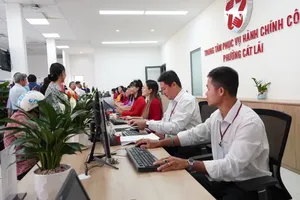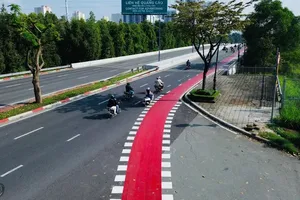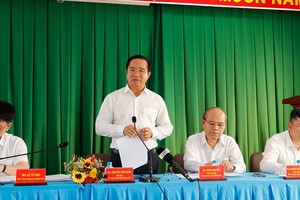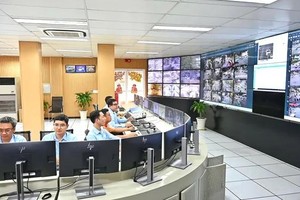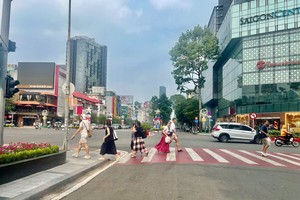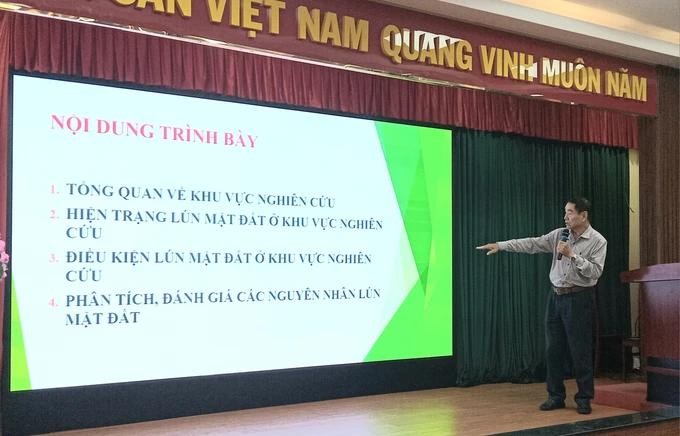
At the workshop themed ‘The current situation of subsidence and its impact on sustainable economic sectors in Ho Chi Minh City’, Nguyen Thanh Nhuan from the division of Surveying, Mapping, and Remote Sensing at the Ho Chi Minh City Department of Natural Resources and Environment announced findings from a survey conducted by Japan International Cooperation Agency (JICA).
According to the survey, Ho Chi Minh City has experienced continuous land subsidence since 1990, with an estimated cumulative subsidence of about 1 meter and an annual rate of 2-5 centimeters. In areas with concentrated commercial buildings, the subsidence rate is even higher, at about 7-8 centimeters per year. This rate is roughly double that of sea level rise, which is about 1 centimeter per year. The causes of subsidence include weak geological foundations, impacts from traffic activities, civil works such as construction of houses and high-rise apartments, and groundwater exploitation.
Furthermore, the Ministry of Natural Resources and Environment’s study in 2019 revealed that Ho Chi Minh City continued to face issues of land surface subsidence. The most significant subsidence area recorded a measurement of 31mm, with 14,775 hectares experiencing rapid subsidence exceeding 15mm per year, while an additional 22,331 hectares exhibited relatively rapid subsidence ranging from 10 to 15mm per year.
Compared to the period from 1996-2014, District 8, Binh Chanh District, and District 12 have continued to experience subsidence. In contrast, Districts 5, 10, and 11 no longer face this disaster. However, new subsidence areas have emerged in former District 9 (now Thu Duc City), Nha Be, Cu Chi, Hoc Mon, and Binh Chanh districts, as well as in Tan Phu, Phu Nhuan, District 6, and Binh Thanh.
According to the Ministry of Natural Resources and Environment, land subsidence in the southern largest city is attributed not only to natural causes like tectonic plate movement but also to human activities. These include urbanization, which increases the load on weak ground, vibrations from traffic, and groundwater exploitation.
Associate Professor Huynh Quyen, who serves as the Principal of Ho Chi Minh City University of Natural Resources and Environment, has indicated that gradual settling or sudden sinking of the Earth's surface once coupled with high tides and rising sea levels will place the city at a heightened risk of sinking. This situation poses significant challenges to the city's long-term development, particularly amid the increasingly complex development of climate change.
Furthermore, subsidence leads to considerable damage and adversely impacts the lives of residents.
Many participants at the workshop voiced their opinion that the rapid pace of climate change, more extreme weather, and rising tides, the issue of land subsidence in Ho Chi Minh City heightens the risk of widespread flooding.
To mitigate this subsidence, the city must adopt a range of coordinated solutions, including better urban planning and reducing groundwater extraction. Importantly, the city should invest in a comprehensive monitoring and forecasting system for land subsidence to enable decision-making that aligns with natural conditions and supports sustainable socio-economic development.





